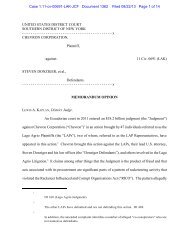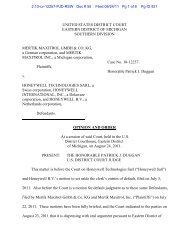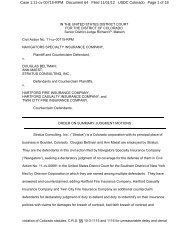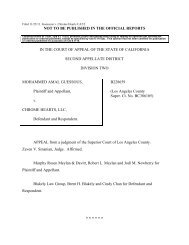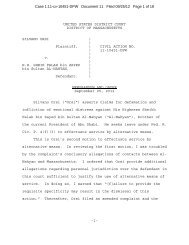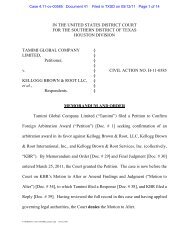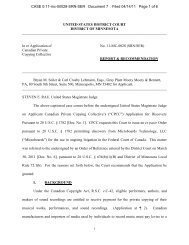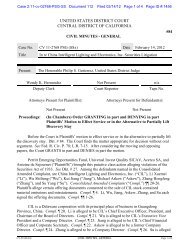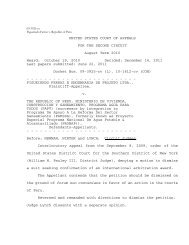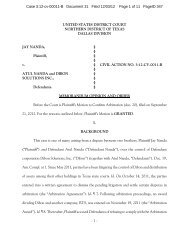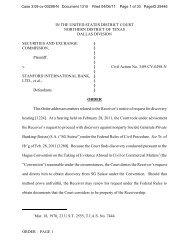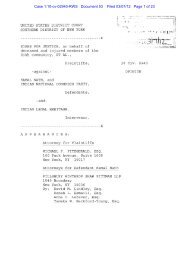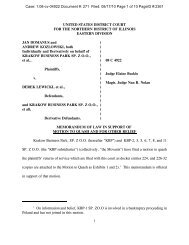UNITED STATES DISTRICT COURT FOR THE ... - Letters Blogatory
UNITED STATES DISTRICT COURT FOR THE ... - Letters Blogatory
UNITED STATES DISTRICT COURT FOR THE ... - Letters Blogatory
You also want an ePaper? Increase the reach of your titles
YUMPU automatically turns print PDFs into web optimized ePapers that Google loves.
Case 1:11-mc-91078-WGY Document 31 Filed 12/05/11 Page 10 of 21<br />
Here, however, through the MLAT Standards, the court has clearly codified law to<br />
apply and has “judicially manageable standards” against which to judge and evaluate the<br />
actions or inactions of the Attorney General. The MLAT Standards are “definite standards”<br />
and “judicially enforceable.” See Medellin v. Texas, 522 U. S. 491, 550, 556, 561 (Breyer, J.,<br />
dissenting)(2008).<br />
(a) Intervenors Have Set Forth a Case or Controversy and, Therefore, Have<br />
Sufficient Article III Standing<br />
In order to obtain review under the Administrative Procedure Act (the “APA”), an<br />
aggrieved party must have Article III standing to challenge the failure of an agency to abide<br />
by a procedural requirement only if that requirement was designed to protect some threatened<br />
concrete interest of the [party] who must show that the government act performed without the<br />
procedure in question will cause a distinct risk to a particularized interest of the party.<br />
Massachusetts Independent Certification v. Johanns, 486 F. Supp. 2d 105 (D. Mass 2007).<br />
The Article III requirement for standing is rather “modest.” Daggett v. Commission on<br />
Government Ethics, 172 F.3d 104, 116 (1st Cir. 1999) (Lynch, Cir. J. concurring and citing<br />
Wright, Miller and Kane, Federal Practice and Procedure, (2nd 1986), sec. 1901 at 288.)<br />
In order to determine if a party has standing, the court reviews three elements. Lujan<br />
v. Defenders of Wildlife, 504 U.S. 555, 560-562 (1992):<br />
First, the plaintiff must have suffered an injury in fact — an invasion of a<br />
legally protected interest which is (a) concrete and particularized and (b)<br />
actual or imminent, not conjectural or hypothetical. Second, there must be a<br />
causal connection between the injury and the conduct complained of — the<br />
injury has to be fairly . . . trace[able] to the challenged action of the<br />
defendant, and not . . . th[e] result [of] the independent action of some third<br />
party not before the court. Third, it must be likely, as opposed to merely<br />
speculative, that the injury will be redressed by a favorable decision.<br />
Lujan, 504 U.S. at 560-61 (quotations and internal citations omitted).<br />
The injuries alleged by the Intervenors are concrete and particularized in that the<br />
injuries affect the Intervenors “in a personal and individual way.” Lujan, supra 504 U.S. 560,<br />
10




